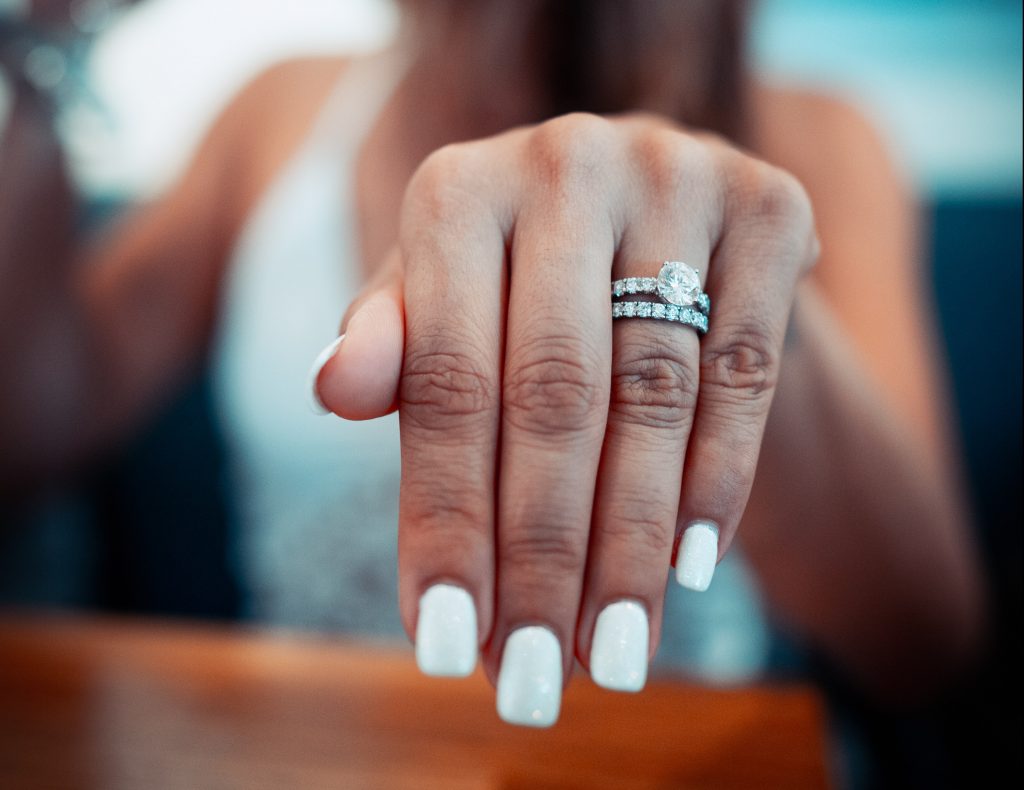An engagement ring is a highly treasured jewellery item, one you’ll (hopefully) have forever. It’s thus important to have your ring match your own personal style and taste. With so many designs, settings and stones to choose from, ring shopping can be overwhelming. Luckily, we’re here to help.
While the setting, or the way the stone is secured into the ring, may not be the most important thing one thinks of, it is crucial to the anatomy of the ring. It helps determine the overall design of the ring and its durability.
A pavé setting, also known as a bead setting, is perfect for the bride wanting something a little more sparkly. It is french for ‘paved’ and it is a jewellery technique in which small diamonds are studded along the band of the ring, making it appear like a paved or cobblestoned road.
Diamonds are closely set together in this setting, and sparkle brilliantly under the light. Typically, diamonds used for this setting must be 0.01 to 0.02 carats to be technically characterised as ‘pavé’, anything smaller falls under a ‘micro-pavé’ setting.
An advantage of this setting is that it enhances a centre diamond that has a lower brilliance, cut or clarity grade. It adds extra sparkle and is technically the more economical choice, as smaller diamonds are less expensive than one diamond of the exact same weight.
However, it is important to note that this setting is more susceptible to stone loss, and offers more small spaces for dirt to accumulate. This setting also requires more inspection and maintenance than most other ring settings.
Picture: Pexels




















